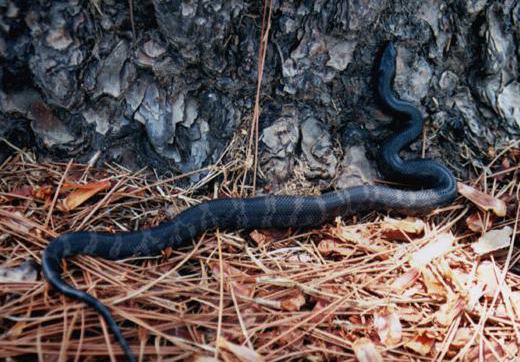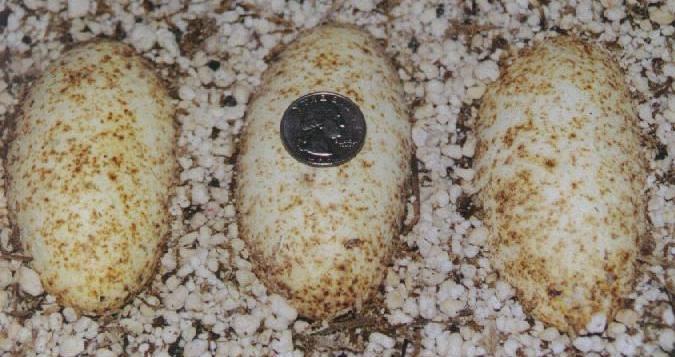

 |
 |
![]()
Black Pine Snake
Pituophis melanoleucus lodingi
| Size: Hatch: 45-56cm (18-22 inches) Adult: Normally 2m + (6 feet) Scalation:
Text by KJ Lodrigue, Jr. |
 Hatchling Black Pine click to enlarge Photo by KJ
Lodrigue, Jr. |
| Coloration and
Description: General: Ventral: Young: Captive Varieties: Range: The present day range is almost definitely greatly reduced. For all practical reasons, they are almost definitely extirpated in Louisiana. Their numbers are greatly reduced in both Mississippi and Alabama to the point of being protected in both states. Louisiana currently offers no protection for them. Most of the wild Black Pines now occur on De Soto National Forest where they are completely protected. This is currently their last stronghold as a wild population. In the past few years, more and more scientific research has been conducted concerning their natural history. This subspecies is known to intergrade with Florida, or Southern, Pines in the extreme southeastern part of their range. Some Northern pines in the extreme southwestern part of their range may show some indications of past integredation with Black and southern pine snakes. The original specimens collected in Louisiana are thought to demonstrate characteristics of historic intergredation with Louisiana pine snakes. Habitat: Prey: In the wild, they feed on a large assortment of endothermic prey. They are known to take small rodents (such as various wild rats and mice), small rabbits and their young, squirrels, and birds and their eggs. They seem to especially appreciate squirrels. Captive Behavior: Although most hardly hiss in captivity once acclimated, the young and infrequently handled snakes often hiss with such extreme that a normal conversation is nearly impossible to conduct in their presence. Captive Breeding: |
| This species has been shown to be relatively easy to bred in captivity. First, make sure that the adults are at least 1.5+m (>4.5 feet) to ensure the least chance of problems. Adults should be brumated for a full 3 months at as close to 10C (50F) as possible. Be careful not to drop too much below that temperature, though. Breeding should occur that "spring" after the first shed of the season for the pair. |  Black Pine eggs click to enlarge Photo by KJ Lodrigue, Jr. |
| Eggs are deposited in the usual manner about 6 weeks
after breeding. A prelaying shed occurs 7-14+ days before
egg deposition. They normally lay from 7 to 11 eggs at a
time. Double clutching is uncommon but possible. Care for
the eggs are standard, except that special care should be
taken to assure that the shell does not dry out. This
will cause near full-term dead eggs due to the neonates'
inability to get enough oxygen and/or pip through the
toughened eggshell. Care of neonates is standard with
many hatchlings accepting pink rats or fuzzy mice even
before their first shed. Literature Cited: Conant, R. 1956. A review of two rare pine snakes from the gulf coastal plain. American Museum Novitates. 1781:1-31. Conant R. and J. T. Collins. 1991. A field guide to reptiles and amphibians of eastern and central North America. Houghton Mifflin Company, Boston. Richling, S. B. 1995. The taxonomic Status of the Louisiana Pine Snake (Pituophis melanoleucus ruthveni) and its relevance to the Evolutionary Species Concept. Journal of Herpetology 29(2):186-198. |